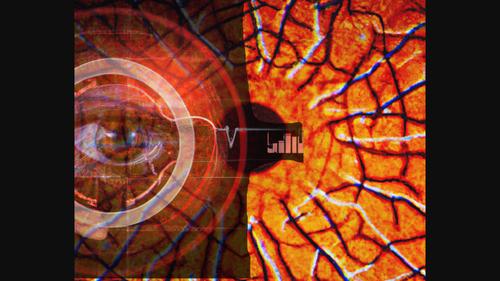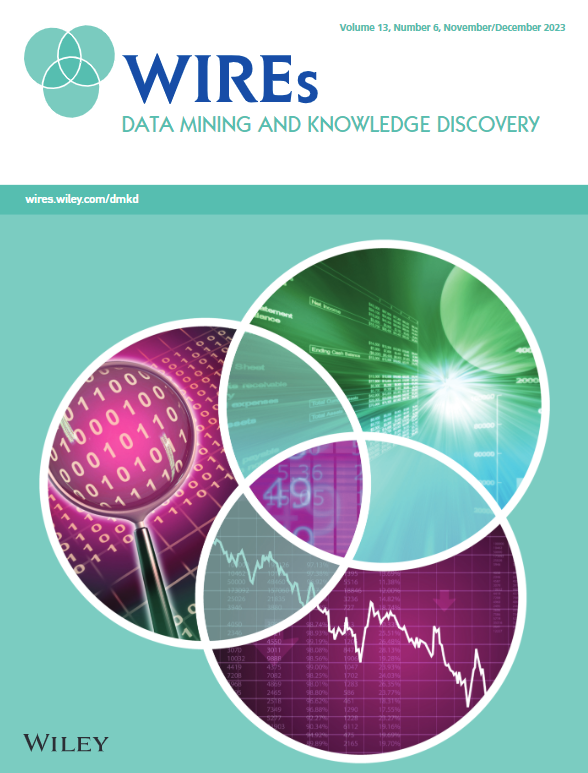Use of artificial intelligence algorithms to predict systemic diseases from retinal images
IF 11.7
2区 计算机科学
Q1 COMPUTER SCIENCE, ARTIFICIAL INTELLIGENCE
Wiley Interdisciplinary Reviews-Data Mining and Knowledge Discovery
Pub Date : 2023-05-16
DOI:10.1002/widm.1506
引用次数: 0
Abstract
The rise of non‐invasive, rapid, and widely accessible quantitative high‐resolution imaging methods, such as modern retinal photography and optical coherence tomography (OCT), has significantly impacted ophthalmology. These techniques offer remarkable accuracy and resolution in assessing ocular diseases and are increasingly recognized for their potential in identifying ocular biomarkers of systemic diseases. The application of artificial intelligence (AI) has been demonstrated to have promising results in identifying age, gender, systolic blood pressure, smoking status, and assessing cardiovascular disorders from the fundus and OCT images. Although our understanding of eye–body relationships has advanced from decades of conventional statistical modeling in large population‐based studies incorporating ophthalmic assessments, the application of AI to this field is still in its early stages. In this review article, we concentrate on the areas where AI‐based investigations could expand on existing conventional analyses to produce fresh findings using retinal biomarkers of systemic diseases. Five databases—Medline, Scopus, PubMed, Google Scholar, and Web of Science were searched using terms related to ocular imaging, systemic diseases, and artificial intelligence characteristics. Our review found that AI has been employed in a wide range of clinical tests and research applications, primarily for disease prediction, finding biomarkers and risk factor identification. We envisage artificial intelligence‐based models to have significant clinical and research impacts in the future through screening for high‐risk individuals, particularly in less developed areas, and identifying new retinal biomarkers, even though technical and socioeconomic challenges remain. Further research is needed to validate these models in real‐world setting.

利用人工智能算法从视网膜图像预测全身性疾病
非侵入性、快速和广泛使用的定量高分辨率成像方法的兴起,如现代视网膜摄影和光学相干断层扫描(OCT),对眼科产生了重大影响。这些技术在评估眼部疾病方面提供了显著的准确性和分辨率,并越来越多地认识到它们在识别全身性疾病的眼部生物标志物方面的潜力。人工智能(AI)的应用已被证明在识别年龄、性别、收缩压、吸烟状况以及从眼底和OCT图像评估心血管疾病方面具有良好的效果。虽然我们对眼身关系的理解已经从几十年来基于大量人群的传统统计建模研究中得到了发展,但人工智能在这一领域的应用仍处于早期阶段。在这篇综述文章中,我们集中讨论了基于人工智能的研究可以扩展现有传统分析的领域,从而利用系统性疾病的视网膜生物标志物产生新的发现。五个数据库- medline, Scopus, PubMed,谷歌Scholar和Web of Science使用与眼部成像,全身性疾病和人工智能特征相关的术语进行了搜索。我们的审查发现,人工智能已广泛应用于临床试验和研究应用,主要用于疾病预测、寻找生物标志物和风险因素识别。尽管技术和社会经济挑战依然存在,但我们设想基于人工智能的模型通过筛查高风险个体,特别是在欠发达地区,以及识别新的视网膜生物标志物,在未来对临床和研究产生重大影响。需要进一步的研究来验证这些模型在现实世界的设置。
本文章由计算机程序翻译,如有差异,请以英文原文为准。
求助全文
约1分钟内获得全文
求助全文
来源期刊

Wiley Interdisciplinary Reviews-Data Mining and Knowledge Discovery
COMPUTER SCIENCE, ARTIFICIAL INTELLIGENCE-COMPUTER SCIENCE, THEORY & METHODS
CiteScore
22.70
自引率
2.60%
发文量
39
审稿时长
>12 weeks
期刊介绍:
The goals of Wiley Interdisciplinary Reviews-Data Mining and Knowledge Discovery (WIREs DMKD) are multifaceted. Firstly, the journal aims to provide a comprehensive overview of the current state of data mining and knowledge discovery by featuring ongoing reviews authored by leading researchers. Secondly, it seeks to highlight the interdisciplinary nature of the field by presenting articles from diverse perspectives, covering various application areas such as technology, business, healthcare, education, government, society, and culture. Thirdly, WIREs DMKD endeavors to keep pace with the rapid advancements in data mining and knowledge discovery through regular content updates. Lastly, the journal strives to promote active engagement in the field by presenting its accomplishments and challenges in an accessible manner to a broad audience. The content of WIREs DMKD is intended to benefit upper-level undergraduate and postgraduate students, teaching and research professors in academic programs, as well as scientists and research managers in industry.
 求助内容:
求助内容: 应助结果提醒方式:
应助结果提醒方式:


